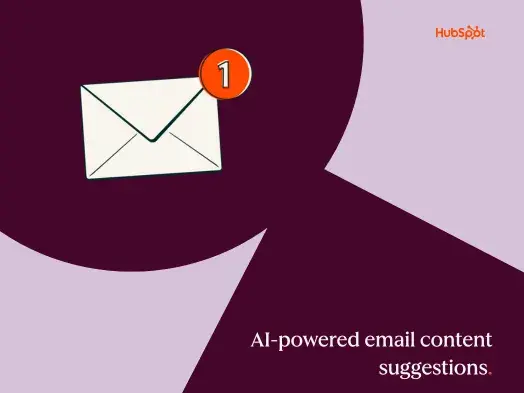Journalists don’t have time for your pitches.
They’re chasing deadlines, balancing sources, and sorting through inboxes flooded with generic, copy-pasted, and irrelevant emails.
If your media pitch doesn’t stand out or deliver real value, it’s gone in seconds -unopened, unread, and unpublished. But if you do pitch it right to the right people you find through public relations (PR) software, you’ll soon be swimming in sponsorships.
You won’t just secure coverage; you’ll build credibility, forge stronger relationships, and position your brand as a trusted source journalists want to hear from. For that, you need to craft the perfect media pitch.
What is a media pitch?
A media pitch is a concise message sent to journalists or media outlets to propose a story idea, interview, or feature. It aims to spark interest in covering a topic that benefits a brand or individual by aligning with the publication’s audience or editorial focus.
Different types of media pitches lead to different opportunities for brands. A PR media pitch boosts your recent product launch or company takeover while bringing your vendors or clients into the limelight. Gaining the attention of a journalist or influencer puts you in front of their target audiences.
TL;DR: Media pitch at a glance
- What is a media pitch? A short, targeted message to journalists proposing a story or angle.
- Why it matters: Builds credibility, earns coverage, and expands reach without paid ads.
- What are its goals? Drive traffic, secure mentions, boost revenue, and gain backlinks.
- What are the types of media pitch? Product launch, thought leadership, event, expert commentary, and human-interest.
- How to write a media pitch: Lead with a story, personalize it, back it with data, keep it brief, and include a clear CTA.
- What are some mistakes to avoid? Mass emails, brand-centric angles, jargon, bad timing, and weak hooks.
- What are the best practices? Build media relationships, be a trusted source, prep spokespeople, and focus on long-term value.
Why does a perfect media pitch matter for successful media coverage?
A media pitch is still one of the most effective tools in a PR professional’s arsenal, because when it works, it works really well.
As simple as writing a media pitch sounds, 43% of journalists and influencers receive more than 20 daily. For those who don’t feel like doing the math, that’s anywhere from 100-500 pitches per work week.
But it’s not easy. According to the Propel Media Barometer, which analyzed over 555,000 media pitches in Q1 of 2025, the average open rate for PR pitches is just 42.8%, and the average response rate is only 3.92%. That means most pitches go unanswered but the small percentage that do succeed often translate into high-authority media placements, valuable SEO wins, and long-term brand equity.
But when you break through the noise and get picked up by a journalist or editor, you don’t just get coverage; You tap into other people’s audiences (OPA). That means new traffic, broader reach, and a surge in brand visibility without spending on ads.
-png.png?width=600&height=422&name=G2CM_FI523_Learn_Article_Images-%5BMedia_pitch%5D_Infographic_image1_V2a%20(1)-png.png)
Earned media is still one of the most trusted forms of exposure. While advertising raises awareness, a third-party endorsement from a reputable publication drives credibility, clicks, and often conversions.
Whether you’re launching a product, making a bold statement, or positioning your brand as a thought leader, a strong pitch can turn into a headline and a measurable return on investment.
And as AI Overviews and chatbots like ChatGPT become more prominent in how people discover and consume information, the importance of public relations only grows. These AI tools often pull from credible, high-authority news sources. Getting your story into those sources via a media pitch ensures your brand has a place not just in a newsroom but potentially in the next AI-generated summary your customers read.
What are the goals of a media pitch?
A pitch is more than a message; it’s a strategic communication tool. And like any good strategy, it works best when you’re clear about what you’re trying to achieve. Here’s what every effective media pitch should aim to accomplish.-png.png?width=600&height=422&name=G2CM_FI523_Learn_Article_Images-%5BMedia_pitch%5D_Infographic_image2_V1a%20(2)-png.png)
1. Gain website traffic
The main goal of your email media pitch should be to gain organic traffic to your official website. It takes great effort to frame a media pitch and promote your content, but it takes even greater effort to find the right influencers. Influencers can raise your traffic numbers and make you stand out on the search engine ranking page (SERP).
When influencers or journalists promote your brand in a digital space or with their followers, some of their followers might return to your website or register as a lead to learn more about your product. The greater the traffic influx, the higher the click-through rate and scope of conversions.
2. Be mentioned in the press
Every brand wants PR or news coverage from a trusted publisher. Brands spend countless hours brainstorming over media pitch ideas, presentations, and PR activities to earn external press attention.
Press attention is like the express train to successful brand mentions, direct revenue, and word-of-mouth marketing. Press mentions can get a brand up and running in no time, regardless of how much impact they have made or how long they have been a part of the market. If you’re running a brand and don’t have an ample marketing budget, media pitching to the press is a wise move.
3. Boost revenue
The idea is to get a well-suited media outlet to accept your pitch and share your narrative with their readers and viewers. They’ll relate to your story, talk about your brand in their circles, and send potential prospects your way.
Some might trust the press enough to sign up for your product without a sales call because press releases are more genuine than anything you can buy. Paid marketing pushes people to check out your website, regardless of whether they are interested. But press media pitches directly address search queries, get clients, and grow your financial reserves.
4. Get backlinks and social shares
Every high-end press release gets organic backlinks and social shares. You’ll notice leads streaming into your registration desk if you include a webinar link or a podcast link in your PR media pitch. It increases your sign-up numbers and helps you promote content better. Not only this, but if a media agency agrees to roll out your webinar on its channel, you win the attention of investors, spectators, and fellow entrepreneurs who subscribe to it. You’ll also attract a number of relevant domains linking back to your website as a valuable resource for their own audience.
After you’ve established the goal(s) of your pitch, it’s time to begin the process of writing a pitch that won’t be mass-deleted. Let’s look at a few examples.
What are the different types of media pitches?
Once you’re clear on the “why,” it’s time to think about the “what.” Not all pitches are created equal, and understanding the different types helps you tailor your message and approach for maximum impact. Here are the most common kinds PR professionals use:
- Product launch pitches: Announce a new product or feature and explain why it matters now. Focus on the problem it solves, the innovation behind it, or how it addresses a market gap.
- Thought leadership pitches: Position your executive or subject matter expert as a credible voice in the industry. These often offer commentary, predictions, or unique insights tied to trends or breaking news.
- Event or announcement pitches: Invite journalists to cover events such as product unveilings, conferences, or company milestones. Highlight the newsworthiness — not just the logistics.
- Expert commentary pitches: Offer your brand’s perspective or analysis on a trending topic, policy change, or industry shift. These pitches are often shorter, more reactive, and designed to help journalists meet fast-moving deadlines.
- Human interest or story-driven pitches: Share stories that go beyond the product, like customer success stories, impact narratives, or brand missions that connect emotionally with audiences.
Each type of pitch requires a slightly different tone, angle, and level of detail but they all share one thing: they must be relevant to the journalist’s audience and compelling enough to earn coverage.
Media pitch vs. press release: What’s the difference?
At this point, it’s also crucial to understand what a pitch isn’t. Many confuse a media pitch with “press release” but they serve very different purposes. Knowing the difference ensures you’re using each one strategically.
- Media pitch: A short, personalized message sent directly to a journalist or editor. It’s tailored to a specific journalist’s beat and aims to spark a conversation or secure a story. Usually, 2–4 short paragraphs focused on the why and value of the story.
- Press release: A formal, public announcement distributed widely to media outlets. It’s written for a broader media audience and often published verbatim, including official quotes, data, and context.
What a media pitch is: A strategic outreach message designed to cut through the noise, build a relationship, and persuade a journalist that your story is worth telling.
What it is not: A press release, a marketing email, or a mass announcement.
Pro tip: Use press releases to announce official company news but always follow up with a tailored media pitch that connects the dots for the journalist and shows why it’s relevant to their audience.
What makes a perfect media pitch: Key elements to include
At its core, a winning media pitch is not about what you want to say, but why a journalist and their audience should care. Below are the fundamental principles every pitch needs to follow.
1. Lead with a strong, newsworthy angle
Journalists aren’t interested in product announcements masquerading as stories. They care about narratives that inform, inspire, or challenge their readers. Instead of leading with features, focus on the why now: the bigger trend, cultural shift, or industry change your story connects to. If your angle isn’t timely or relevant, even the best-crafted email won’t land.
2. Focus on the audience, not just your brand
Your pitch shouldn’t read like a press release. It should speak directly to the journalist’s audience, highlighting why the story matters to them. Position your product, announcement, or perspective as part of a larger conversation or solution to a widely felt problem. Always ask: Would this story still be interesting if our brand name wasn’t attached to it?
3. Target the right journalists
A perfectly written pitch is useless if it lands in the wrong inbox. Relevance is everything. Research who covers your industry, what they’ve written about recently, and what kinds of stories resonate with their readers. A targeted, personalized pitch beats a mass email every time.
Platforms listed on G2, such as media and influencer targeting software and PR solutions, can help you find the right journalists faster and track engagement more effectively.
4. Back up your story with credible data
Facts, numbers, and original insights elevate your pitch from opinion to authority. Journalists rely on credible information to shape their stories and they’re far more likely to follow up if you offer exclusive data or fresh research that hasn’t been widely reported.
5. Connect to larger trends and conversations
The best pitches don’t exist in isolation. They tie into ongoing news cycles, industry shifts, or timely discussions. Whether it’s a regulatory change, consumer behavior shift, or new technology trend, anchoring your pitch in a broader context helps it stand out — and makes it more relevant to a journalist’s coverage.
6. Establish authority with people and perspectives
A pitch supported by expert commentary, a compelling quote, or access to a spokesperson is inherently more valuable. It signals that you’re not just pushing a story; you’re offering insight and expertise that can make a journalist’s coverage richer and more credible.
7. Keep it brief and purposeful
Time is a journalist’s most precious resource. A strong pitch is short — usually 150–200 words — and laser-focused on the essentials: the story, why it matters now, and what you’re offering. If they want more details, they’ll ask for them.
8. Make next steps obvious
Even the most compelling pitch can stall if you don’t guide the journalist on what to do next. Include a simple, clear call to action: an interview, a demo, a quote request, or additional resources. Make it easy for them to say “yes.”
How to write a winning media pitch: The anatomy
You’ve done the groundwork, crafted a strong story, gathered your data, and identified the right journalists. Now it’s time to pull it all together into a pitch that gets journalists to connect with you.
85% of journalist want emails introducing yourself over email and why you want to connect instead of calling over phone or connecting on social media. That means how you structure your email and what you lead with can make or break whether your story gets noticed.
From the subject line to the sign-off, every element of your email should be intentional, strategic, and designed to make their job easier. Here’s how to write a media pitch email that earns attention and a response.
1. Subject line: Your first (and often only) chance
The subject line determines whether your email gets opened or buried in an overflowing inbox. It must be concise, relevant, and intriguing without overpromising.
For example:
- “Exciting announcement from our company!” – This doesn’t work unless your company is Apple, Microsoft, or another household name and even then, they wouldn’t pitch media this way. It says nothing about why the journalist should care.
- “We launched a new product!” – It’s all about you, and journalists don’t write stories about brands talking to themselves.
- “A game-changing solution for businesses everywhere!” – Overhyped and meaningless. It’s the subject line equivalent of shouting into the void.
Instead, focus on clarity, specificity, and relevance. Your subject line should hint at a story, not announce a press release.
Here are some stronger examples:
- “New AI tool cuts marketing costs by 40% — here’s how” – Specific and impactful, with a clear outcome.
- “Survey: 72% of marketers struggle with personalization — here’s what’s changing” – Data-driven and timely.
- “How [Company] is solving the $5B logistics bottleneck in retail” – Problem-focused and audience-relevant.
Tips to do it right:
- Keep it under 10 words.
- Hint at the story angle or key data point.
- Avoid vague buzzwords or clickbait; credibility beats curiosity.
- Use numbers, trends, or fresh insights if possible.
- Make it sound like a headline, not a company update
Greeting and personalization: Show that you did your homework
Your opening line sets the tone. Generic intros like “Dear journalist” are an instant delete. Instead, make it clear this pitch was written for them, not at them.
Tips to do it right:
- Use their name and mention their publication.
- Reference a recent article or topic they covered to show relevance.
- Connect your pitch to something they’ve written before if possible.
- If you’re using outreach or PR automation tools, double-check your settings. Nothing kills credibility faster than an auto-filled “Dear <recipient>” placeholder that doesn’t get the name right. So, make sure names are being pulled in correctly from email data, and every message feels intentional and personal.
Example: Hi [Name], I enjoyed your recent article on how small businesses are using AI to scale content. I thought you might be interested in a story that builds on that trend.
The hook: Lead with the “why now”
Your first paragraph should immediately answer three questions: Why this story? Why now? Why you? Journalists should see the news value without having to dig for it.
Tips to do it right:
- Tie the pitch to a current trend, news cycle, or emerging challenge.
- Be clear and concise; aim for two to three sentences.
- Focus on the story, not just the product.
Example: As marketing teams seek ways to do more with less, [Company] has introduced a platform that automates content creation using real-time data, resulting in a 40% reduction in production time.
Body: Deliver the details (without overwhelming)
This is where you provide substance, the facts, context, and value behind your story. Keep it focused, but ensure it explains why this matters.
Tips to do it right:
- Include one or two key data points or insights.
- Add a short quote from a company spokesperson or expert.
- Clearly explain how this benefits the journalist’s audience.
- Use short paragraphs or bullet points for easy reading.
Example:
Built in response to a 2025 survey that found 72% of marketers struggle with scaling personalized content, our new platform uses AI-driven workflows to help teams create high-impact campaigns in half the time.
“We’re not just automating content,” says [Name], [Title] at [Company]. “We’re changing how teams think about creativity and scale.”
Call to action: Make the next step clear
Don’t assume the journalist knows what you want them to do. End with a specific, actionable request that moves the conversation forward.
Tips to do it right:
- Be specific: “Would you be open to an interview?” rather than “Let me know what you think.”
- Offer a time window for availability.
- Include links to press materials or additional resources if helpful.
Example:
I’d love to set up a 15-minute interview with our CEO to discuss how this technology is reshaping content strategies. Are you available next week?
Sign-off: Leave the door open
Your closing should be polite, professional, and make it easy for them to follow up.
Tips to do it right:
- Thank them for their time.
- Reiterate your contact info and availability.
- Keep it short — one or two lines is plenty.
Example:
Thank you for considering this story. I’m happy to share more details or connect you with our team at your convenience.
Best,
[Your Name]
[Title] | [Company] | [Email] | [Phone]
What are some bad vs. great media pitch examples?
Now that you understand what makes a great pitch and how to structure it, let’s look at how all those principles work in practice. Below are two sample pitches, one that’s likely to be ignored and one that’s built to earn a journalist’s attention.
Example 1: A weak, easily ignored pitch
Subject: New product launch
Hi there,
We’re excited to announce the launch of our new platform, ProductProp 2.0! It has several innovative features and will help companies improve their workflows.
Would you like to feature us in your publication?
Best,
Alex
Marketing Associate, ProductProp
Why it fails:
- Too generic; no clear story angle, data, or relevance.
- No personalization or reference to the journalist’s beat.
- No context about why now or what problem it solves.
- Reads like a press release, not a pitch.
Example 2: A strong, media-ready pitch
Subject: New data: 72% of AI projects fail to deliver ROI
Hi Sarah,
I saw your recent piece on enterprise AI adoption and wanted to share new data that challenges the hype.
Our 2025 State of AI in Business survey, based on 1,000+ senior leaders, found that 72% of companies say their AI projects have failed to deliver measurable ROI, and 41% have paused or scrapped initiatives altogether. The top reasons? Poor data quality, unclear objectives, and a lack of in-house expertise.
This signals a shift toward smaller, outcome-focused use cases and a “reset” moment for enterprise AI strategies. [Spokesperson Name], [Title] at [Company], can speak to why so many initiatives miss the mark and how leading teams are adapting.
Would you be open to a quick call next week to discuss the findings or see the full report?
Best,
[Your Name]
[Title] | [Company] | [Email] | [Phone]
Why it works:
- Personalized to the journalist and connects to their coverage.
- Data leads immediately, with no fluff.
- Still tells a complete story: problem, causes, shift, and next step.
- Easy for a journalist to scan and decide to follow up.
Pro tip: Most pitches fail because they’re written like company announcements. The ones that succeed sound like story ideas — relevant, data-backed, audience-focused, and easy for journalists to act on.
What are the common media pitch mistakes to avoid (and how to fix them)
Even the most well-intentioned PR professionals fall into traps that can kill a pitch before it’s even opened. The good news? Most of these mistakes are completely avoidable once you know what to look for. Here are the most common pitfalls and how to avoid them.
1. Mass emailing journalists
Why it’s a problem: Nothing screams “lazy outreach” like a blanket email blasted to 200 people with [Receipeient’s name] as the below journalist points out in this tweet. Journalists can spot it instantly and will likely ignore it just as quickly.

How to fix it: Segment your outreach based on beat, publication, and audience. Personalize each email with a reference to their past work or why the story is relevant to them specifically.
2. Leading with your brand instead of the story
Why it’s a problem: “We’re excited to announce…” is the fastest way to lose a journalist’s interest. They don’t exist to promote your brand; their job is to serve their readers with valuable, relevant stories.
How to fix it: Flip the narrative. Lead with a compelling insight, timely trend, or contrarian data point, and position your brand as part of the larger story — not the headline.
3. Overloading your pitch with jargon and marketing language
Why it’s a problem: Journalists don’t want to wade through corporate buzzwords or overhyped adjectives. If your email reads like a press release or ad copy, they’ll stop reading.
How to fix it: Keep your language clear, specific, and human. Focus on outcomes, insights, and relevance — not branded messaging.
4. Burying the hook
Why it’s a problem: Journalists skim hundreds of pitches every week. If the most newsworthy detail is buried in paragraph three, they won’t see it.
How to fix it: Lead with the hook: the data, trend, or story angle that makes your pitch worth reading. If it doesn’t grab attention in the first two sentences, rework it until it does.
5. Forgetting a clear next step
Why it’s a problem: A pitch without a call to action leaves the journalist wondering what you want them to do, and that usually means they’ll do nothing.
How to fix it: End every pitch with a clear, actionable ask: an interview, access to a report, a product demo, or an expert quote. Make it easy for them to say “yes.”
6. Pitching at the wrong time
Why it’s a problem: Even a strong story can fall flat if the timing is off; For example, pitching an annual trends report six months too late or sending product news right after a major industry announcement.
How to fix it: Pay attention to the news cycle, editorial calendars, and seasonal trends. Time your pitch to align with what journalists (and their audiences) care about right now.
7. Treating follow-ups like spam
Why it’s a problem: One follow-up is considerate. Five is annoying. Over-following kills your credibility and can burn relationships you’ve worked hard to build.
How to fix it: If you don’t hear back after two follow-ups, move on. Or better yet, follow up with added value: a new data point, updated angle, or different spokesperson instead of just “checking in.”
Pro tip: Before sending any pitch, read it like a journalist. Would you find it valuable, timely, and relevant, or would you delete it? That quick perspective shift can save you from most of these mistakes before they happen.
What are the best practices for a media pitch?
A great media pitch is more than a single email — it’s part of a larger strategy to build credibility, trust, and long-term visibility. Once you’ve mastered the basics, these best practices will help you stand out as a reliable source journalists want to hear from again.
- Build relationships before you pitch: Connect with journalists before you make a pitch. Follow their work, share their stories, and engage with them online so they recognize your name when you land in their inbox.
- Be a connector, not just a contact: Go beyond pitching stories. Offer access to experts, customers, or original research that can support their future reporting. Becoming a go-to source increases the chances they’ll come to you for future stories.
- Prep your internal experts: Train your spokespeople to deliver clear, concise, and quotable insights. A prepared expert who can speak on short notice builds trust and positions you as a dependable partner.
- Support the story-building process: Don’t just pitch a topic, help shape the story. Offer background briefings, relevant context, or follow-up ideas that make the journalist’s job easier and deepen the value you provide.
- Think long-term, not one-off: Treat every pitch as the start of a relationship. Even if a story isn’t picked up, maintain contact, share future opportunities, and build credibility over time. Consistency and reliability are what turn pitches into partnerships.
Pro tip: The most successful PR professionals become part of a journalist’s network, not just a name in their inbox. When you consistently offer useful insights, credible sources, and real support, you shift from pitching stories to shaping them.
Frequently asked questions about media pitches (FAQs)
1. What’s the best pitch opening line?
The best opening line cuts straight to the story and shows immediate relevance to the journalist’s audience. Instead of starting with “We’re excited to announce…” (which sounds like a press release), lead with the why now — a timely trend, surprising data point, or connection to a story they’ve already covered.
For example:
“As more companies pause AI investments due to poor ROI, our latest research shows 72% of projects fail before reaching production.”
This approach makes your pitch sound like a story, not a sales email.
2.What makes a good media pitch?
A good media pitch is clear, relevant, concise, and focused on the journalist’s needs, not just your brand. It:
- Delivers a strong story angle that ties into current trends, data, or audience interests.
- Shows you’ve done your homework by referencing their recent coverage or beat.
- Provides value — such as expert commentary, exclusive insights, or original research.
- Ends with a clear next step, like an interview request or data preview.
The best pitches are short (150–200 words) and easy to act on.
3. What are the elements of a successful media pitch?
A strong media pitch usually includes these five components:
- Subject line: Concise and intriguing — enough to make them open the email.
- Personalized intro: A tailored opening that references their work or audience.
- Hook: A clear “why now” that explains why the story matters.
- Supporting details: Key data points, quotes, or insights to add depth.
- Call to action: A specific ask — such as an interview, briefing, or comment.
4. What is the difference between a media pitch and a media advisory?
A media pitch is a personalized email sent to journalists to persuade them to cover a story, write a feature, or interview a spokesperson. It’s tailored, story-driven, and usually written for a specific journalist or outlet.
A media advisory, on the other hand, is more like an event invitation or notification. It provides essential details — who, what, when, where, why — to alert the media about an upcoming press conference, launch, or event, without the storytelling or persuasion element of a pitch.
5. What’s the difference between PR and PA?
PR (Public Relations) focuses on managing and shaping public perception of a company, brand, or individual through media outreach, storytelling, and strategic communication. It’s about building relationships and influencing how people think and feel about you.
PA (Public Affairs) deals with building and maintaining relationships with policymakers, regulators, and government stakeholders. It’s more focused on influencing public policy, legislation, or regulatory outcomes — often working behind the scenes with decision-makers rather than journalists.
Pitching your way to success
Breaking through the email clutter is difficult. But if you take the time to craft the perfect media pitch that’s personalized, concise, informative, and interesting, journalists and influencers will have a hard time saying no. Reinstate your value in the market by spreading awareness in the media and ringing the bells of quality and sustainability.
In the news for the wrong reasons? Save your company’s reputation by mitigating a PR crisis.
This article was originally published in 2023 and has been updated with new information.










